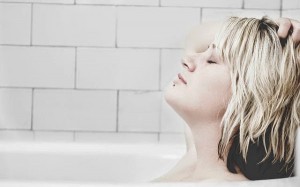Contributing Writer for Wake Up World
Bearing in mind that skin is the body’s largest organ and absorbs substances readily, it’s always a good rule of thumb to avoid exposing skin to anything we wouldn’t ingest. And yet, a common routine is poisoning us on a daily basis – specifically, chlorinated showers and baths. Used in water treatment facilities to destroy harmful bacteria, viruses and fungi, chlorine is a potent disinfectant. But the darker side of water chlorination is rarely acknowledged, namely, that it causes serious harm to humans in ways which often remain unnoticed until major illness strikes.
Silent poison
A hot, steamy shower or bath is a great way to relax and unwind – or so we thought. In reality, we are exposing ourselves to an array of toxins with significant potential consequences. We would never suspect that we are bathing in an Environmental Protection Agency (EPA) classified pesticide.
According to the Global Healing Center article, “Chlorine, Cancer, and Heart Disease”:
“There is a lot of well-founded concern about chlorine. When chlorine is added to our water, it combines with other natural compounds to form Trihalomethanes (chlorination byproducts), or THMs. These chlorine byproducts trigger the production of free radicals in the body, causing cell damage, and are highly carcinogenic. The Environmental Defense Fund warns that, ‘Although concentrations of these carcinogens (THMs) are low, it is precisely these low levels that cancer scientists believe are responsible for the majority of human cancers in the United States.'”
A case in point is a study involving women from Hartford, Connecticut, which found that those with breast cancer have much higher levels of chlorine byproducts (by 50 – 60 percent) than women who are cancer-free.
Likewise, research in Spain discovered a higher incidence of bladder cancer in people exposed to chlorine through bathing, showering, ingestion and swimming in pools.
Toxins are not only easily absorbed through pores opened by hot water but also through inhalation of chloroform – a toxic byproduct of water chlorination. In the article “Is your daily shower making you sick?,” Chris Kresser, L.Ac, observes:
“While our bodies can filter out much of the chlorine from our drinking water, the THMs and other disinfectant byproducts we inhale during showers and baths may be much more harmful, since the chlorine gas we inhale enters directly into our blood stream. “
As stated by the EPA, chloroform exposure affects the central nervous system and liver. It can also provoke depression and irritability. Unfortunately, chloramine (ammonia combined with chlorine) is often added to the water supply as well, creating an even heavier toxic load.
Minimize risk
Short of swearing off bathing permanently, a few simple methods are effective in reducing contact with chlorine. Needless to say, a high-quality shower filter is the first line of defense. Bathwater filters are also available. However, most only remove chlorine – unless the filter specifically utilizes vitamin C for reducing chloramine as well. Ultimately, protection from both chlorine and chloramine would entail a whole-house water filtration system.
Budget-friendly options include:
- Dissolving 1000 milligrams of vitamin C in bathwater to neutralize chlorine and chloramine (up to 99 percent)
- Taking less frequent or shorter showers
- Reducing the temperature of bath and shower water
- Turning off water while lathering
Chlorine most likely won’t disappear from our water supply any time soon. As a seemingly cheap disinfectant, it’s here to stay. But through awareness and proactive steps, we can substantially reduce exposure and lessen health risks.
[For more information, please see: Is Chlorine in Our Drinking Water and Swimming Pools a Health Hazard?]
Sources:
- http://www.epa.gov
- http://aje.oxfordjournals.org
- http://www.ncbi.nlm.nih.gov
- http://www.epa.gov
- http://www.ncbi.nlm.nih.gov
- http://pi.library.yorku.ca
- http://www.globalhealingcenter.com
- http://chriskresser.com
- http://www.globalhealingcenter.com
- http://science.naturalnews.com
Previous articles by Carolanne:
- Common Toxin in Your Pantry Causes Obesity, Diabetes, Infertility… and Much More
- Is Mold Making You Sick?
- Hemp – The Ultimate Cash Crop, Health Food and Environmental Savior Rolled Into One
- Slash your Organic Food Bill by Almost 90 Percent with This One Simple Method
- Confirmed by Science: You Really Can Change Your DNA – Here’s How
- Chemtrails: Learn How to Protect Yourself From These Treacherous Poisons
- Top 10 Food Frauds: Formaldehyde, Plastic, Melamine & Caustic Soda Found in Common Foods
- Autistic Boy With Higher IQ Than Einstein Discovers Gift After Removal From State-Run Therapy
- Enhance Spiritual, Mental and Physical Well-being with a Pineal Gland Detox
- Enterprising Community Aims for Total Food Self-Sufficiency with Free Edible Landscapes
- The Silent Toxin in Food that Provokes Cancer, Diabetes, Multiple Sclerosis and More
- DIY $2 Self-Watering Garden Bed – Grow Produce Easily, Even in the Toughest Drought Conditions
About the author:
Carolanne enthusiastically believes if we want to see change in the world, we need to be the change. As a nutritionist, natural foods chef and wellness coach, Carolanne has encouraged others to embrace a healthy lifestyle of organic living, gratefulness and joyful orientation for over 13 years. Through her website Thrive-Living.net she looks forward to connecting with other like-minded people from around the world who share a similar vision.
Follow Carolanne on Facebook, Twitter and Pinterest.
Photo Credit: “Bath Melancholy” by N. Renaud from Ottawa, Canada – [1]. Licensed under Creative Commons Attribution-Share Alike 2.0 via Wikimedia Commons.

If you've found value in our articles, we invite you to support the release of our brand-new book, "Gratitude Practices for Kids: A Practical Guide for Adults to Instill a Spirit of Appreciation and Positivity in the Next Generation."
"Gratitude Practices for Kids" brings together over 25 innovative and accessible practices designed to enhance gratitude in everyday life. This comprehensive guide is backed by 17 scientific studies, ensuring each concept is grounded in research, underscoring our commitment to nurturing growth, emotional intelligence, and positive interactions between adults and children.
We encourage you to opt for the paperback version to celebrate this new release. Dive into its fresh pages away from digital distractions, allowing you to immerse yourself in the transformative practices it offers.
Over recent years, Wake Up World has faced significant online censorship, which has impacted our financial ability to operate. Moving into book publishing represents a strategic step to secure the ongoing funds needed to continue our mission. By purchasing Gratitude for Kids, you help us keep our content free and accessible to everyone, avoiding needing a paywall. With over 8,500 articles published in the last 13 years, we remain dedicated to keeping our valuable content open to all.








